Greg Cosell's Week 12 Review: Aaron Rodgers played a different game vs. Eagles
The highlight of Monday night’s Green Bay Packers win was an amazing throw from Aaron Rodgers to Davante Adams in the end zone. The ball placement into a small window was as precise as it gets. It’s maybe the best throw I’ve seen this season.
[Join the $100K Baller for Week 13 | Tips for your Daily lineup]
But there was a component to the play which won’t get as much attention, but says even more about how well Rodgers played against the Philadelphia Eagles.
[Related: Rodgers at his best is still probably better than anyone else in the NFL]
The Packers called a pair of vertical routes on the play. Jordy Nelson ran a fade route. Rodgers looked that way, then came back to Adams’ side and immediately saw Adams on top of cornerback Nolan Carroll. He turned it loose within the timing of the drop and the route concept, and that’s important based on how the Packers’ offense has stumbled this season.
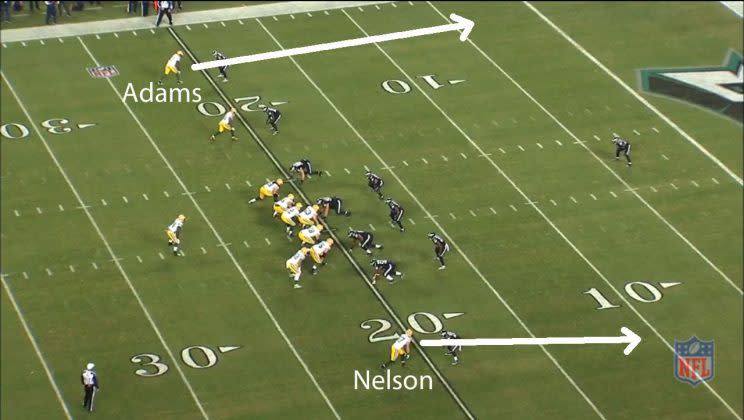
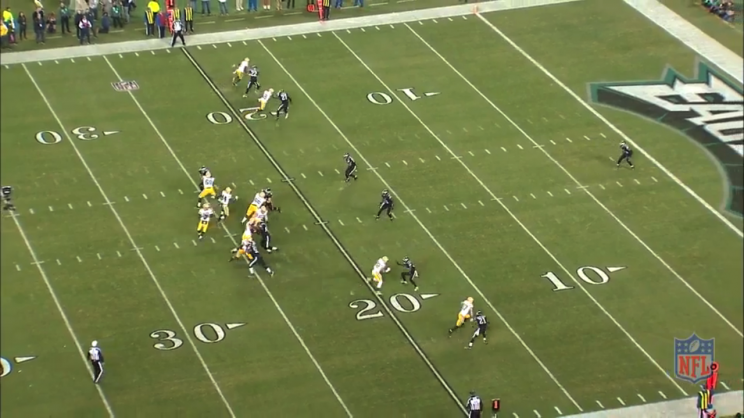
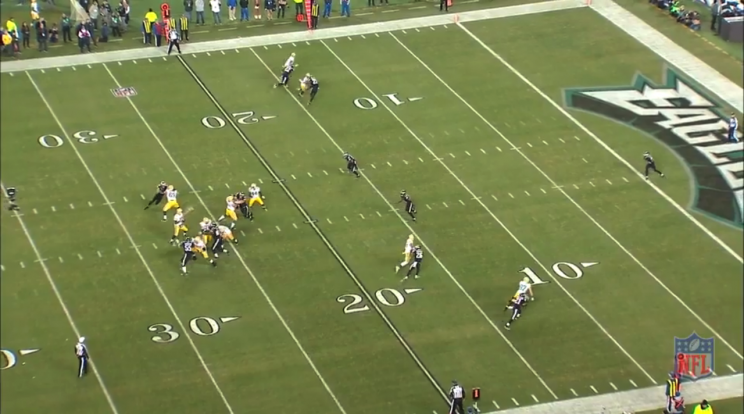
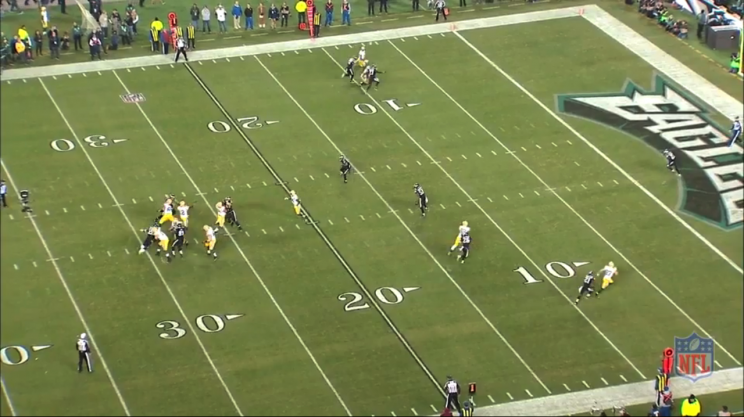
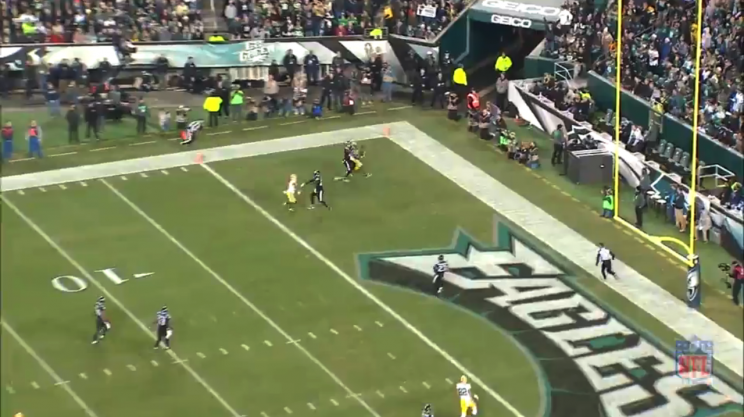
When Rodgers has struggled this season, that timing and rhythm hasn’t been there.
Here’s one play that illustrates the difference. This was the first play of Green Bay’s Week 11 game against the Washington Redskins. Rodgers had the hitch to Nelson on three-step timing. Then he had a wide-open seam route to Jared Cook off five-step timing. He didn’t turn loose either throw. He left the pocket, made the play random and threw an incompletion.
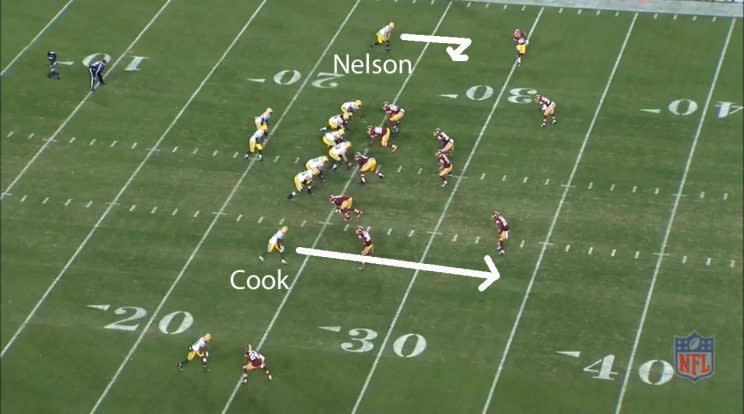
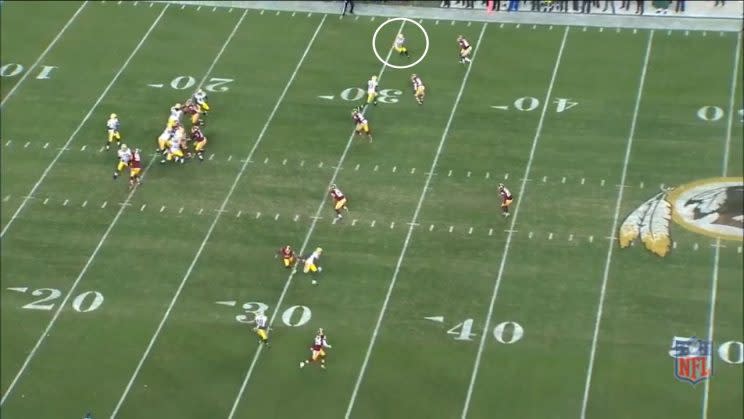

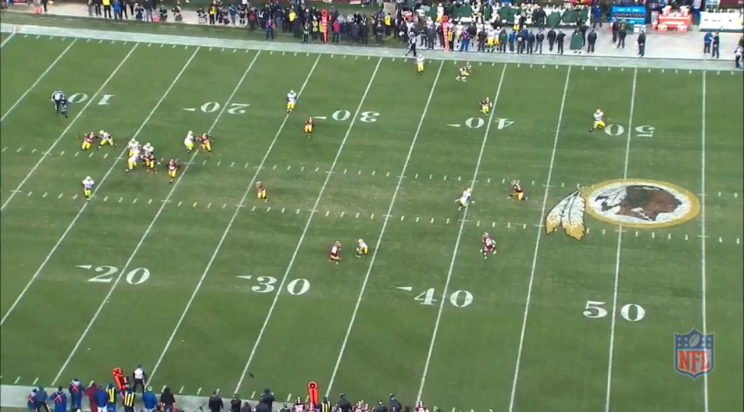
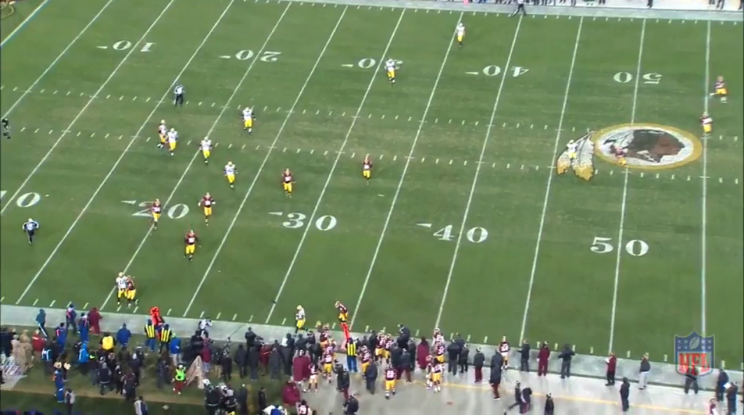
There have been times this season when Rodgers was playing with no intuitive understanding of the timing and rhythm of the Packers’ passing game. He has always played on the edge of the structure of the offense, able to make plays late in the down but still within the called play. At times this season, and even back to last season, he has lost that feel. He became a random player. It’s hard for a coaching staff when they call plays and the quarterback prematurely breaks down in the pocket and tries to make something else happen.
Rodgers played a much different game against the Eagles.
We saw it from the first possession. The Packers had a good quick game with rhythm throws, and Rodgers was turning it loose without hesitation. He was decisive within the structure of the pass game.
This play looks simple, but it showed Rodgers was playing at a high level physically and mentally. Safety Rodney McLeod was in the box, and that’s a blitz alert against the Eagles. Rodgers read that before the snap. There was a zone-blitz concept, with McLeod and safety Malcolm Jenkins rushing. The Eagles had a well-designed “Cover 2 trap” on the side of the blitz to bait Rodgers. But Rodgers had a quick three-step drop, and hit Nelson on the quick out to his right before defensive end Brandon Graham (dropping as part of the zone blitz) could get outside and underneath the play. It’s a subtle play by Rodgers, and it showed he was at the top of his game and playing within the structure.
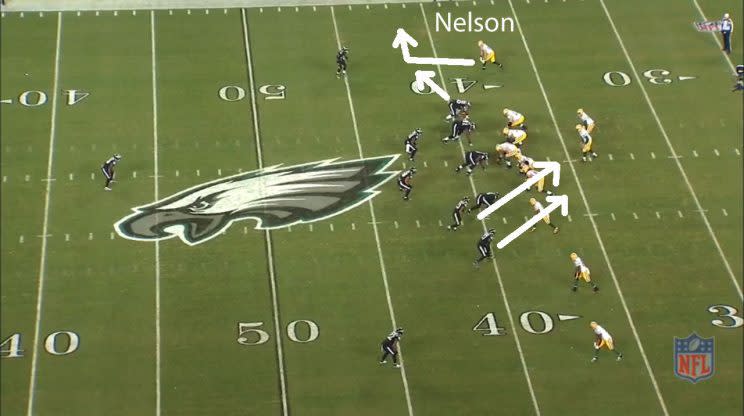
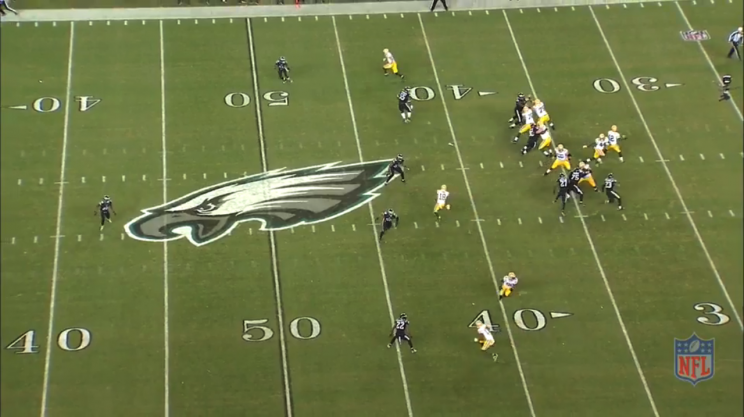
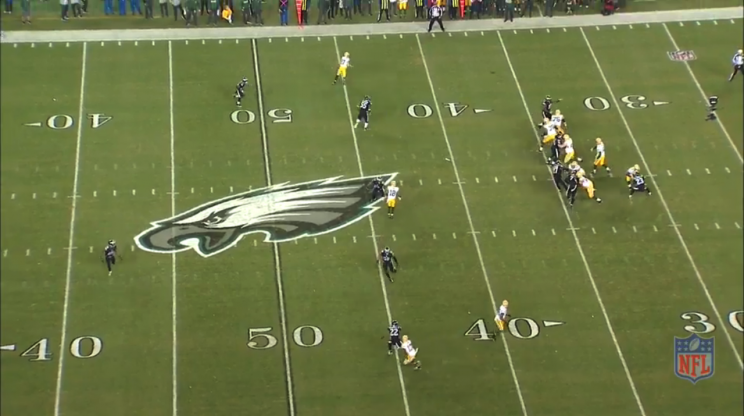
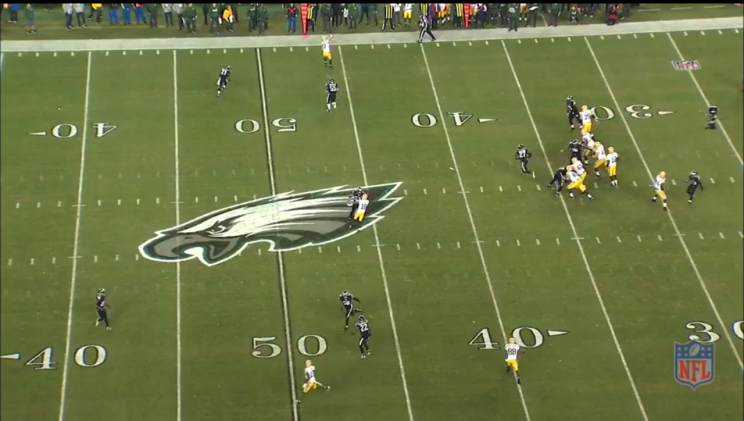
On third-and-7 on Green Bay’s third possession, Rodgers again showed mental quickness and precise physical execution. Against a zone blitz, Rodgers knew he had no blocker for Jenkins. So he immediately threw to Cobb in the void created by Jenkins’ blitz. Again, it’s precise execution of the subtle disciplines of the position. He’s not trying to make a random play outside of the pocket.
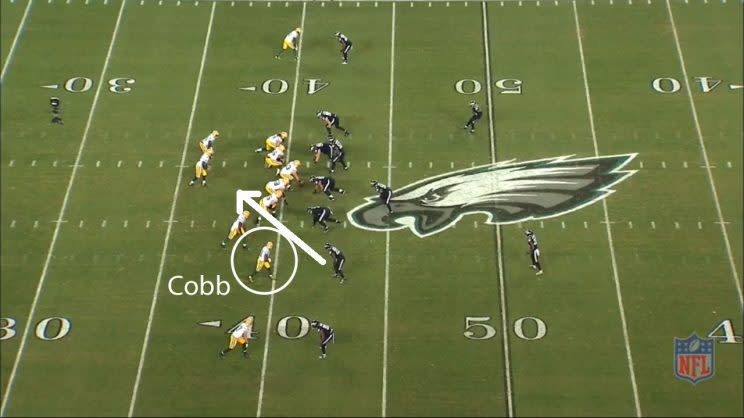

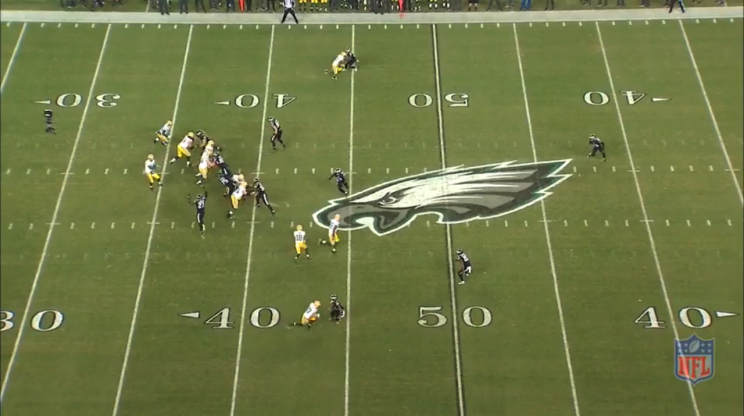
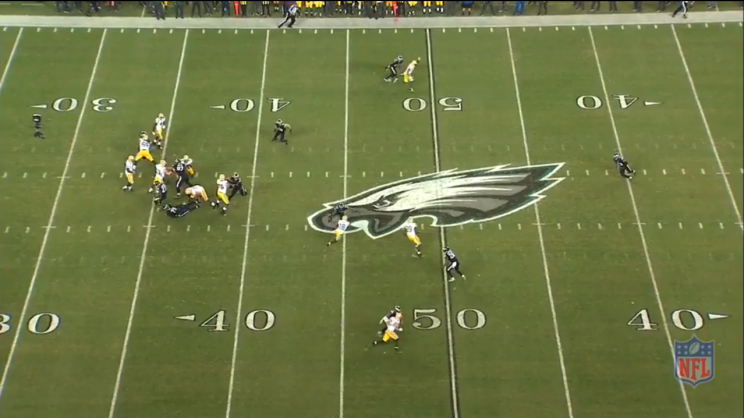
Here’s one more play, from the fourth quarter. On a third-and-12, Rodgers felt the pocket closing down. But he moved comfortably, staying within the confines of the pocket and the structure of the play. Contrast this play to the one from the Washington game above, when Rodgers had open receivers but left the pocket. The Eagles were in “Cover 2,” and that defense usually can’t hold for more than 2.5 seconds. That coverage depends on the pass rush to get to the quarterback by then. Rodgers, from the pocket late in the down, hit Nelson who had continued his dig route across the field and settled on the other side of the far hashmark.
This is Rodgers playing controlled in the pocket and not randomly. This went for 22 yards and was a huge play in the game.
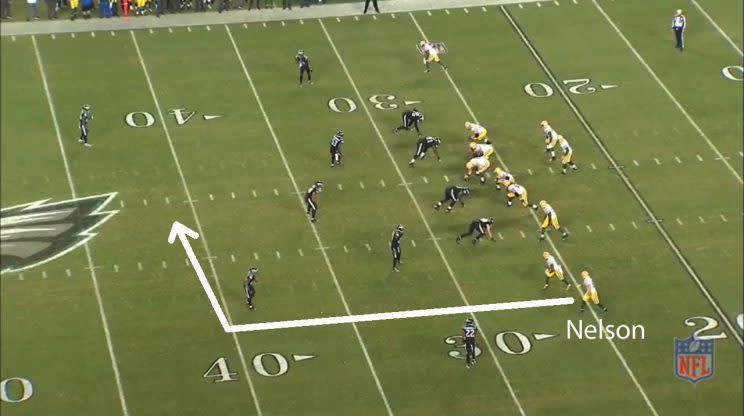

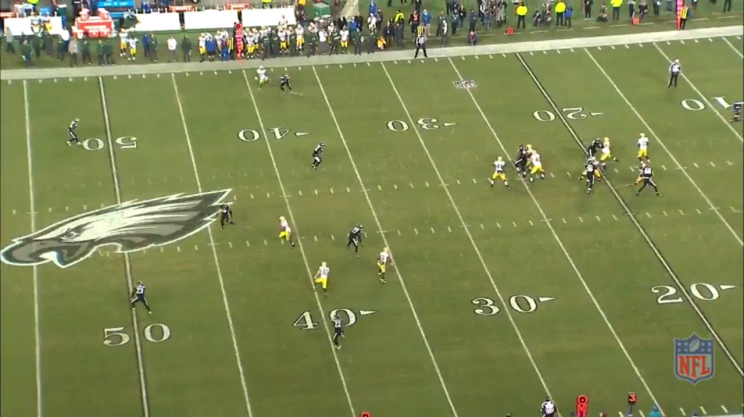
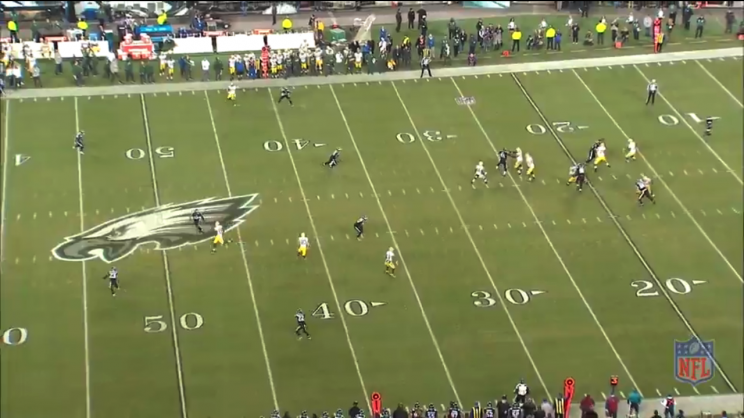
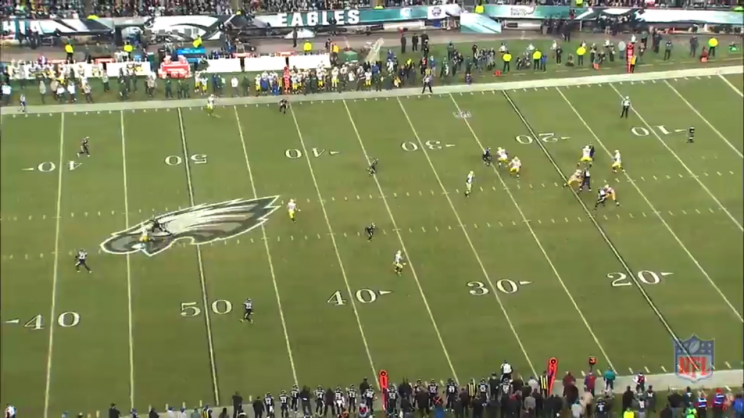
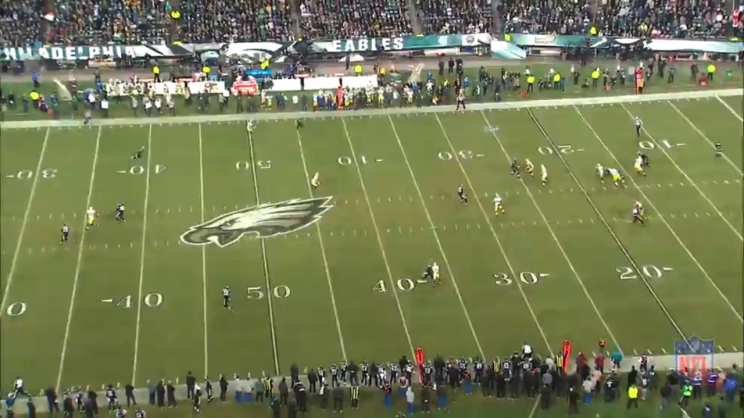

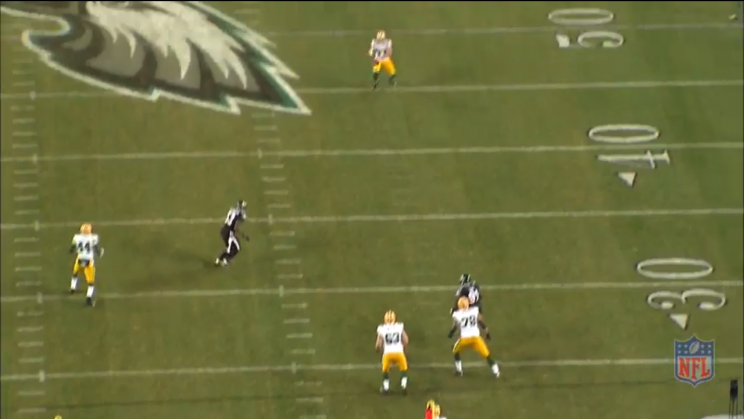
Rodgers must play controlled and efficiently within the structure of the offense. That’s the best way to sustain drives, control the clock and help your defense. In this game, he played with as good a combination of mental quickness and physical execution as he has all season. Instead of being random and dangerous, he was surgical and precise. You saw the difference in the Packers’ offense.
– – – – – – –
NFL analyst and NFL Films senior producer Greg Cosell watches as much NFL game film as anyone. Throughout the season, Cosell will join Shutdown Corner to share his observations on the teams, schemes and personnel from around the league.


